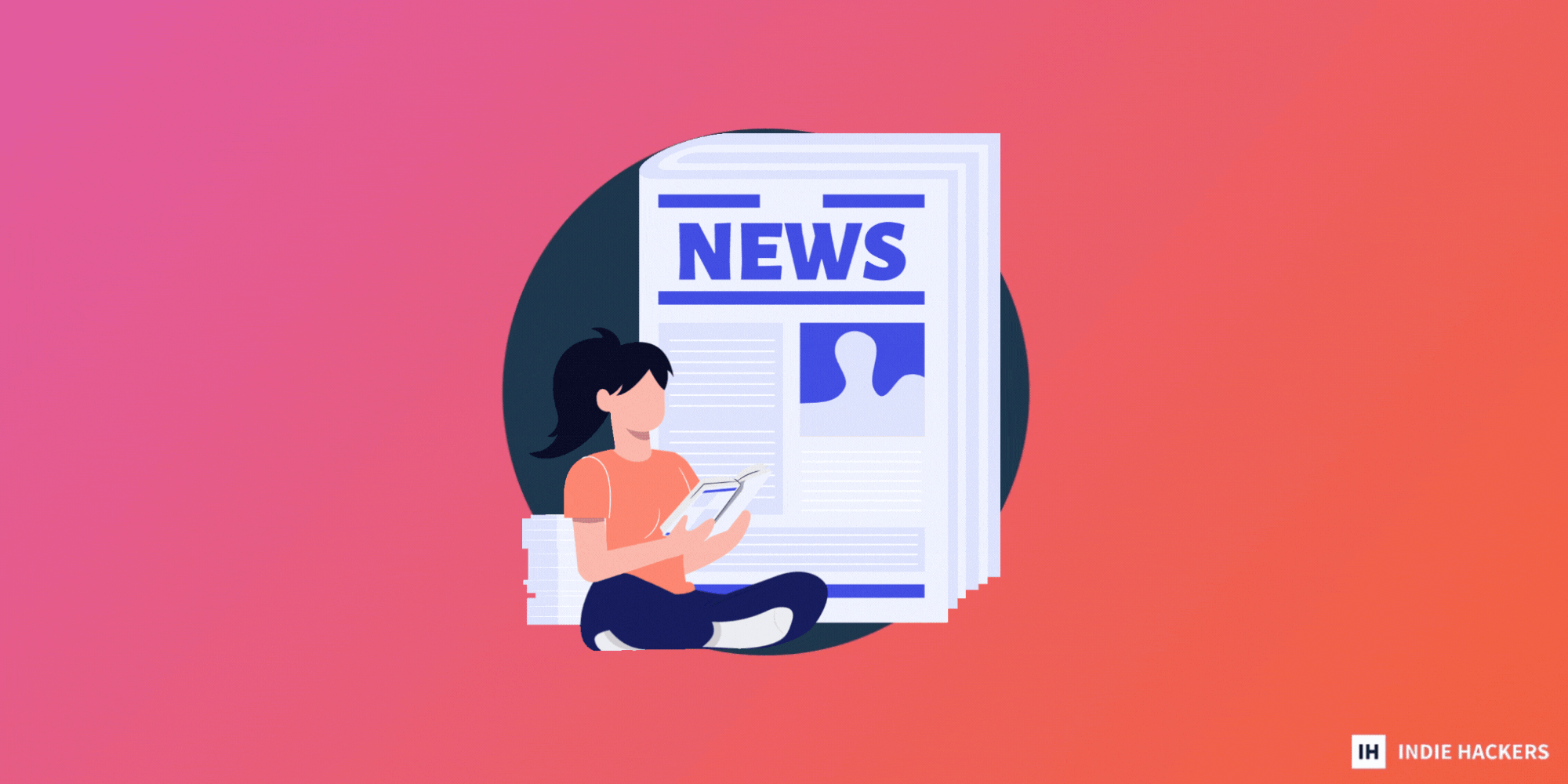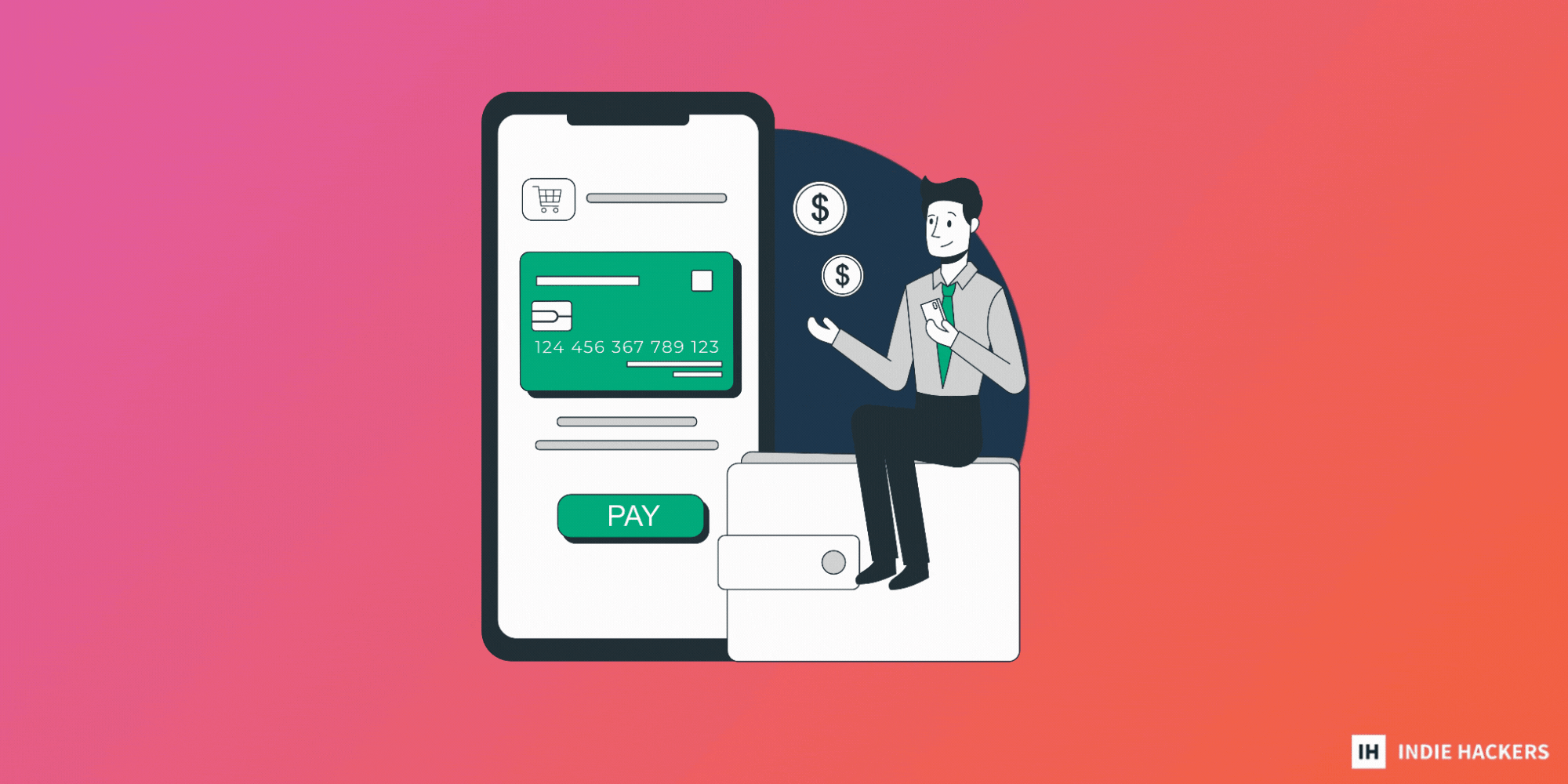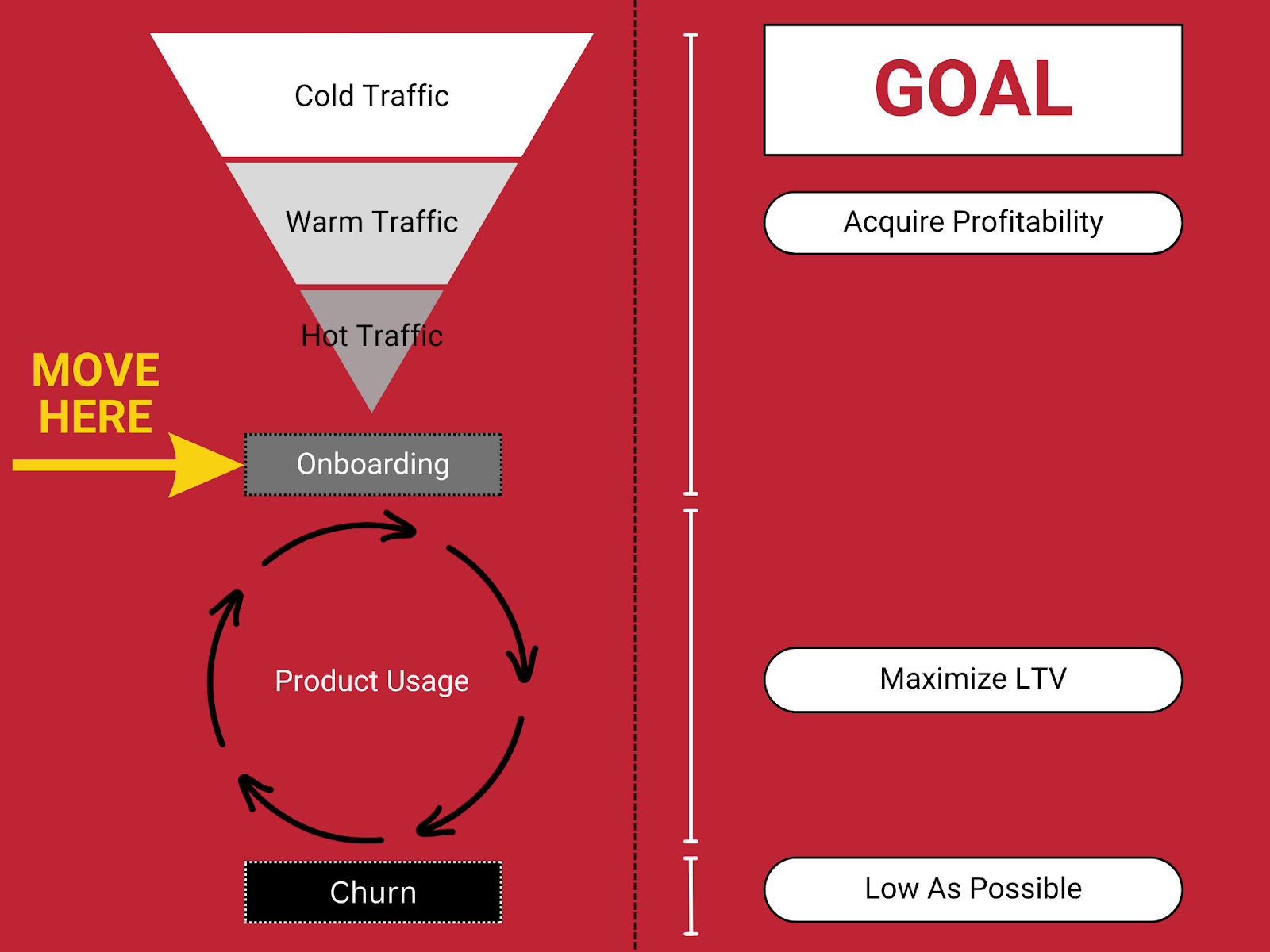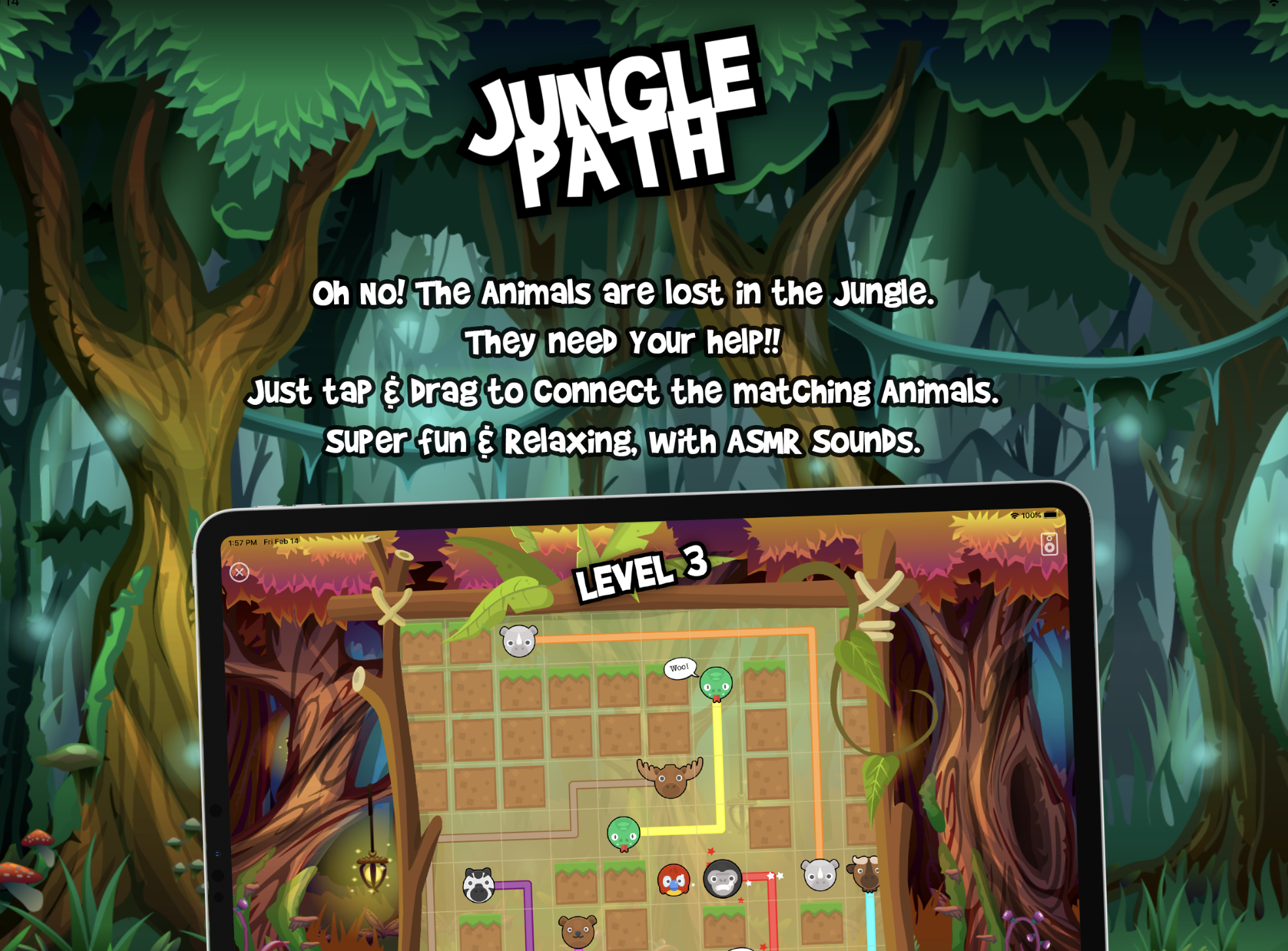Having your product mentioned in major publications is a huge win: - **This step-by-step guide outlines where, how, and whom to pitch** in order to get your business covered by top media outlets, strengthening your brand and adding to your user base.
Having your product mentioned in major publications is a huge win:
-
This step-by-step guide outlines where, how, and whom to pitch in order to get your business covered by top media outlets, strengthening your brand and adding to your user base.
-
Increasing your subscriptions revenue can be a game of trial-and-error. These tips can help you find the secret sauce! Hint: Work from the bottom of the funnel upward.
-
Founder Ben Harraway had his small game, Jungle Park, selected by Apple Retail to be featured in Apple stores worldwide. Here, he shares how the opportunity came about, how he later ended up in a bad contract with another publisher, and how he regained control of his game.
This issue is sponsored by MagnifiCode. Supercharge your development speed! With their dedicated developers by your side, you can focus on scaling your business and getting to market faster, while they bring your ideas to life. You’ll communicate directly with developers in your timezone. Hourly rates: $30–$50. Let’s talk!
Want to promote your business in front of over 75,000 indie hackers in a future issue of the newsletter? Reply to this email. —Channing
📰 Landing PR for Your Startup

by Justin Albertynas
Getting mentions in major press publications is a great way to build credibility for your brand, get backlinks, generate traffic, etc. You could buy an article, but that will cost you thousands of dollars. The good thing is that there are many effective ways to do it for free!
We started our pitching marathon for Ratepunk a year ago. It yielded no significant results until April 2023, when we got mentioned in 19 articles (~1.5B monthly traffic combined), costing us literally nothing. Here's how it's going:
-
April 2023: 19 articles, ~1.5B combined traffic.
-
May 2023: 46 articles, ~6.1B combined monthly traffic.
-
June 2023 (so far): 36 articles, ~4.1B combined monthly traffic.
Here's how we are doing it!
Pitching
The most obvious way to get mentions in publications is pitching, which is classic outreach towards journalists with proposals for potential articles. Here, you suggest a collaboration idea where you would provide insights that only you have, to create a compelling article.

We did this for months on end with no significant results, but then we invited NordVPN's press manager to come over to our office for coffee. She inspired, motivated, and helped us, providing invaluable tips and professional advice. This information is a mix of our strategies combined with the tips we got from her.
Where to pitch
Use Qwoted to pitch specific quote requests. Create a PR account and add your HR manager, CEO, marketing manager, etc., as people you represent. Provide quotes to various pitching requests. This is the most consistent way to get mentions so far. This works!

Use Woodpecker to organize and send out cold emailing campaigns. Finding emails is hard work, though. Here's a screenshot of a sheet our PR manager made, containing over 1.9K press contacts, all found by Googling. This may work.

Terkel.iois good for quick, easy quotes. We haven't tested this platform's full extent, but have had 50% of our answers published. This probably works.

HARO is another query platform that's well-known worldwide. We sent out 200+ answers, with a maximum response rate of 0.01%. I'm not saying it won't work for you, but it didn't for my team.
Cold emailing is the old school method of just picking a journalist and sending them an email with your article proposal. The problem is, you can never know what the journalist needs at the moment, and you're just shooting blindly. At the moment, only 5% of our PR focus is cold emailing. This doesn't work.
How to pitch
-
Do not cold sell: Nobody wants to read a wall of text that's just a big fat advertisement. Provide value to them, just as you provide value with your product. Make it pop.
-
Make a connection: You're both people. Try to have an actual conversation that inspires them to see your company from your point of view. You can do this by reading their previous articles to see what they are passionate about.
-
Do your research on the journalist: Who is this person you're writing to? Why do they write? Try your best to get acquainted with their style. Learn what they need and expect from you.
-
Be quotable and personable: The number one thing that journalists are looking for is a personal, unique experience that they won't find anywhere else. For example:

-
Don't work alone: Get personal experience stories from your team.
-
Use LinkedIn to make real connections: LinkedIn is a great way to make connections with journalists. Message them directly.
-
Stand out: Don't waste the journalist's time.
-
ChatGPT: Perfect for gathering information about topics you know nothing about, fast. Please rewrite your information and fact check, though. Journalists are not stupid, and will notice if AI has written the text. Use several AI checkers. Find interesting facts and information that AI couldn't, and mix it up in your proposed pitch.
-
Follow the rules: If a journalist requests not to be pitched to on Twitter, don't pitch them on Twitter.
Be ready for rejection, but stay optimistic!
Have you landed PR for your business? Share your experience below!
Discuss this story.
📰 In the News

from the Growth Trends newsletter by Darko
🎞 Instagram users can now download Reels.
🤖 How marketing professionals are using generative AI tools.
🧐 Answers to your burning questions about GA4.
💻 Here's the trick to branded keyword and App Store optimization.
🎮 Gen Z installs the most games, and makes the most frequent in-app purchases.
Check out Growth Trends for more curated news items focused on user acquisition and new product ideas.
📈 Increasing Your Subscription Revenue

from the Hustle Newsletter by Kristin Egan
Trendster Daniel Layfield led growth at Codecademy from $10M to $50M ARR, before it sold to Skillsoft for a cool $525M.
He recently opened the floodgates of lessons learned for the Trends community, and his story is a gold mine of subscription growth treasures.
Daniel has experienced plenty of blunders, like:
-
Launching giant projects without due diligence.
-
Putting too much effort into expensive and whimsical growth ideas, like running ads in the NYC subway.
-
Debating for months about adding a pricing page in the header. Spoiler: You should add a pricing page in the header.
Along the way, he learned one particularly important lesson: Work from the bottom of the funnel upward.
Churn, baby, churn
There are two scenarios where people will try to leave your product, and they must be handled differently: Intentional and unintentional churn.

*Source: Daniel Layfield, Trends Facebook community
With intentional churn, you'll find both happy and unhappy customers.
Happy customers have stuffed themselves with delicious morsels at your SaaS buffet, had their fill, and can't stomach any more features. Treat them well on the way out, ask for a review, and maybe they'll come back for seconds.
The unhappy customers are storming out of your buffet because they choked on a bone in the chicken soup.
Provide them with a thoughtful cancellation survey:
-
Start with an open-ended text field to let them air their grievances. Let this run until you can identify patterns in the responses.
-
Build a multiple choice survey based on those responses. Always keep at least one open-ended question in the mix to make room for iteration.
-
Propose cancellation alternatives. For example: "Would you like to try tier B for $15 less per month, including XYZ features?"

But remember, the best way to prevent unhappy churn is to avoid that chicken bone in the first place, by building a better product.
Finally, the unintentional churners are the clumsy ones, tripping over technical issues or bouncing off insufficient card balances. They're trying to give you their money, but keep dropping it.
For them, your job is simple: Clean up the problems that are keeping them from paying you.
Finesse the levers
For subscription businesses, maximizing lifetime value (LTV) is key. You have two levers at your disposal that you should be constantly finessing:
-
Monetization levers.
-
Product levers.

*Source: Daniel Layfield, Trends Facebook community
Use monetization levers to coax subscribers into models that extend LTV. In most cases, this means piling on as many annual subscriptions as possible.
Daniel's favorite trick is to exaggerate the difference between the monthly and annual plan. It worked wonders at Codecademy. Daniel says:
We ran a pricing test and changed the monthly plan to $39.99, and the annual plan to $19.99 monthly. This shifted a considerable amount of users over to the annual plan upfront, and was one of the most successful things we ever did.
Other important monetization lever strategies include:
- Pushing successful monthly users to upgrade to annual plans.
- Timing discounted annual plans based on monthly LTV.
- Turning off email receipts for monthly plans.
- Upselling additional tiers of service or products.
The free trials and tribulations
Daniel says:
One of the hardest challenges in any subscription business is determining what you charge for, what you give away for free, and why.

*Source: Daniel Layfield, Trends Facebook community
But don't worry; he also revealed what he has seen work best:
-
Product tiers that are easy to understand.
-
Pricing that accurately reflects where the most value lies, such as metered usage and time limits.
-
A free product that attracts users who are ready for the paid product.
-
A long enough trial period for users to experience the value.
-
A user journey that naturally exposes free users to the paid product in a way that highlights its value.
Check out like a champion
One of the most profound things that Daniel told us is that:
The checkout page is the only place where a 1% increase in conversion leads to a 1% increase in new revenue.

*Source: Daniel Layfield, Trends Facebook community
Losing customers here is like preparing a Michelin-star meal and forgetting to open the restaurant. Don't. Screw. It. Up.
Daniel suggests carefully weighing all of the available checkout options to optimize your specific use case, as there are many contradictory directions.
For instance, the more information you collect from your customer, the more likely the transaction will be approved. However, some customers will abandon the process if you ask for too much.
Also, single-click payment solutions are proven to help conversion, but at the risk of third-party technology owning your most important page.
Checkout pages are a high-stakes game that demand a ton of your attention.
Daniel Layfield also just started a blog, so go show him some love!
Will you implement any of these tips? Share your thoughts below!
Subscribe to the Hustle Newsletter for more.
🌐 Best Around the Web: Posts Submitted to Indie Hackers This Week

💡 Generate 10 marketing ideas for your product in one minute. Posted by Sveta Bay.
📚 I read 60+ books every year. AMA. Posted by Channing Allen.
💳 How can I protect my SaaS from card testing and fraudulent activity? Posted by Grzegorz Graczyk.
👀 The latest in the Reddit debacle. Posted by Silvio Albertelli.
🤔 Are you using AI to help you code? Posted by Inmypjs.
👾 Discord as a viable marketing channel. Posted by Darko.
Want a shout-out in next week's Best of Indie Hackers? Submit an article or link post on Indie Hackers whenever you come across something you think other indie hackers will enjoy.
🏞 Ben Harraway Regained Control of Jungle Park

by Ben Harraway
Hi, indie hackers! I'm Ben Harraway, and...it's back! One of my favorite products, Jungle Path, is back in my hands. Want to hear a story of highs and lows?
I wrote Jungle Path simply because I'm a nerd, and wanted to figure out how games like Flow created levels. So, I performed a little test that placed dots on a grid, and tried to connect them with path-solving, without connections crossing. It was fun to code, and it slowly turned into its own game.

I released this in January 2020, and not much happened. It sat in the App Store and did small numbers. Then, one day, a phone call came out of the blue. Apple Retail was on the line, wanting to feature Jungle Path in the physical Apple stores worldwide!
That was a high! Let's get more into the lows.
The opportunity
Of course, I accepted, and built a "For Retail Purposes" demo. It was such a high honor! Seeing your app on retail phones is surreal!
This led to quite a few downloads, and eventually Apple also started featuring it in the App Store on some really great lists. It became viable to pop some ads into it, which was just a little AdMob banner.
See these charts for what happened next!


Its best showing was $4K in one day! Gadzooks! I was ecstatic, obviously.
The publishers
Shortly after this success, I started getting emails from game publishers who wanted to take it onboard to grow it further.
I was intrigued, and had always felt I'd love a good publisher behind one of my games to help with marketing. I had a few to choose from. I went with the publisher that I felt was the most genuine, after several emails and video calls.
We discussed a revenue split and monetization via ads, and got a contract together. I signed a one year deal. Jungle Path got transferred to the publisher's Apple ID, and I was asked to implement the usual trackers. Yucky, but okay.
After a short while, the publisher asked to change the monetization method. They wanted to remove the ads and move to a subscription model, at a very low monthly cost. I wasn't too pleased with this idea, but figured they knew best. So, we made the changes to the code.
Straight away, the monetization dropped. No more ads, and the subscription rate was very low.
Then, out of nowhere and without my knowledge, the publisher changed the subscription to $30 per month. This was a shocking value, and a business approach that I am very much against, especially for a casual game like this.
Reviews nosedived, users abandoned the game, and the game was quickly lost at sea. I fought for them to change the revenue model back, but it seems the publisher was having bigger problems, so my emails were not getting a reply. When they did eventually reply, I was told that the contract held, and that they make the decisions.
Poor old Jungle Path died a horrible death. There was nothing I could do. I was stuck in a shitty contract, sad to see my work tarnished and ruined, and gutted that I'd lost an amazing source of revenue.
The aftermath
It's now been over six months since the contract expired, and finally, after much digging and some sleuth work, I found a contact at the publisher's parent company who agreed to transfer the app back to my Apple ID.
I was skeptical at first, but it actually happened! Jungle Path is back in my hands. The first thing I did was update it to remove all traces of the publisher, the horrible monetization model, and (for now) all of the ads.
Here's what I learned:
-
Ad revenue is viable, even with just a single banner. But, you need scale.
-
Be careful who you trust. Game publishers (and other industry professionals) are focused on metrics. They may not care about you or your game.
-
Nice things can happen to nice people, so keep building! One day, that amazing phone call out of the blue will be for you.
Discuss this story.
🐦 The Tweetmaster's Pick

by Tweetmaster Flex
I post the tweets indie hackers share the most. Here's today's pick:

🏁 Enjoy This Newsletter?
Forward it to a friend, and let them know they can subscribe here.
Also, you can submit a section for us to include in a future newsletter.
Special thanks to Jay Avery for editing this issue, to Gabriella Federico for the illustrations, and to Justin Albertynas, Darko, Kristin Egan, and Ben Harraway for contributing posts. —Channing














